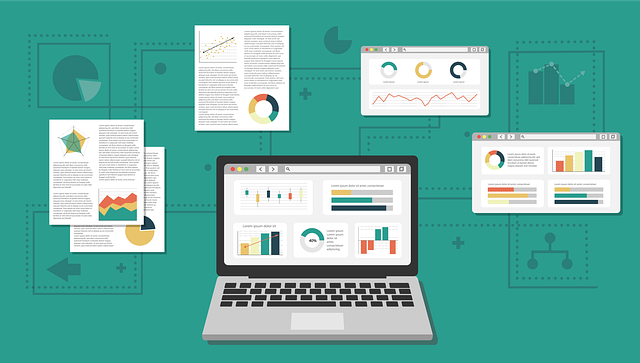Introduction
In today's digital era, the e-commerce landscape is evolving at an unprecedented pace. With the surge in online shopping, e-commerce platforms are constantly competing to attract and retain customers.
In this highly competitive environment, the ability to swiftly gather, analyze, and act on vast amounts of data can be the difference between success and stagnation. This is where automated web crawling comes into play.
Automated web crawling is more than just a technological advantage; it's a strategic necessity for e-commerce businesses aiming to stay ahead in the game.
It allows for the efficient collection of detailed data from various e-commerce websites, ranging from product descriptions and customer reviews to pricing strategies and market trends. This data is invaluable for making informed decisions, understanding consumer behavior, and forecasting market shifts.
However, the process is not without its challenges. It requires a sophisticated approach to handle the volume and complexity of data, while also navigating the legal and ethical implications of web page scraping. In this blog post, we will delve into the significance of automated web crawling in the e-commerce sector, explore its diverse applications, discuss the challenges and future trends, and offer best practices for effective implementation.
Join us as we explore how automated web crawling is revolutionizing the e-commerce industry, enabling businesses to capture insights that drive innovation, enhance customer experience, and ultimately, lead to greater success in the digital marketplace.
What is Automated Web Crawling?
Automated web crawling, at its core, is a process where specialized software, often referred to as crawlers or bots, is used to systematically browse the web and collect specific data from websites. In the context of e-commerce, this translates to an incredibly powerful tool that can harvest a wide range of data from website owners: product listings, customer reviews, pricing information, to inventory levels across multiple e-commerce platforms.
The Mechanics of Web Crawling: These automated programs are designed to simulate the way humans browse the web but at a much faster and more efficient scale. They navigate through web pages, follow links, and can even fill out forms to access and retrieve the data required. Advanced web crawlers that are also capable of handling complex tasks such as logging into user accounts or handling CAPTCHAs.
Customization and Precision: What sets automated web crawling apart is its high level of customization. Businesses can tailor crawlers to target specific data points, such as extracting all product details from a competitor’s e-commerce site or tracking price changes for a particular category of products. This customization allows for precise data collection, directly aligned with business objectives.
Data Parsing and Storage: Once the data is collected, it goes through a parsing process where it’s converted into a structured format, like CSV, Excel, or directly into a database. This makes the data ready for analysis, allowing businesses to glean actionable insights.
Scalability and Efficiency: Automated web crawling can be scaled up or down based on the needs of the business, handling anything from small-scale operations to large-scale data extraction projects. This scalability, combined with high efficiency, makes it a potent tool in the arsenal of any e-commerce business.
Legal and Ethical Compliance: It's crucial for automated web crawling to be conducted in a way that respects legal boundaries and ethical standards. This includes adhering to a website's robots.txt file, which specifies the crawling rules, and ensuring that the crawling activities do not negatively impact the website or web server's performance.

Why is Automated Web Crawling Crucial for E-Commerce?
The dynamic nature of e-commerce sites, with their extensive product listings and fluctuating prices, makes automated web crawling a necessity. It helps businesses monitor market trends, track competitor strategies, and optimize their own e-commerce offerings.
Rapid Access to Market Data: In the fast-moving world of e-commerce, market conditions can change in the blink of an eye. Automated web crawling provides businesses with rapid access to up-to-date market data, allowing them to make timely decisions and stay ahead of market trends. This immediate access to data is crucial for responding to competitor moves, consumer demand shifts, and emerging market opportunities.
Enhanced Competitive Intelligence: E-commerce is a highly competitive arena where understanding your competitors' strategies can be a game-changer. Automated web crawling enables businesses to gather comprehensive intelligence about competitors’ product offerings, pricing strategies, promotional tactics, and customer reviews. This intelligence is invaluable for benchmarking your own business strategies against the market and identifying areas for improvement or differentiation.
Customer Insights and Personalization: Automated crawling helps e-commerce sites to aggregate vast amounts of data about customer preferences, behaviors, and feedback from various online sources. By analyzing this data, businesses can gain insights into customer needs and preferences, enabling them to personalize their offerings and marketing strategies. This level of personalization is critical for improving customer engagement and loyalty.
Optimizing SEO and Content Strategies: SEO is vital for e-commerce sites to improve visibility and attract organic traffic. Web crawling allows for the analysis of search trends, keyword effectiveness, and competitor SEO strategies. This information helps in optimizing website content and metadata to rank higher in search engine results, thereby driving more traffic and potential sales.
Inventory and Supply Chain Management: Automated data crawling can be instrumental in monitoring inventory levels and consumer demand across different platforms. This information aids in effective supply chain management, ensuring that stock levels are optimized, and product availability meets customer demand.
Cost-Effectiveness and Resource Optimization: Manually monitoring and analyzing data across multiple e-commerce platforms is resource-intensive and prone to errors. Automated data crawling streamlines this process, reducing the need for extensive manpower and minimizing the risk of human error. This efficiency not only saves costs but also allows human resources to be redirected to more strategic tasks.

Looking for your next web scraping project
Get in the mix of web scraping by learning about different projects ideas. Check out the top ideas using advanced web scraping techniques.
Click Here: Advanced Python Web Scraping Projects
Techniques and Tools for Effective Data Crawling
Exploring Various Web Scraping Frameworks and Cloud-Based Services
Web Scraping Frameworks
These are software libraries designed to facilitate the extraction of data from websites. They provide a framework for developers to write code that specifies which data to collect and how to process it. Key examples include:
Scrapy: A powerful and versatile Python-based framework that allows for scalable and efficient web data scraping. It is particularly well-suited for large-scale web crawling projects.
BeautifulSoup: Another Python library, best known for its simplicity and ease of use, ideal for smaller projects or those new to web scraping.
Selenium: Often used for more complex scraping tasks, Selenium can interact with web pages dynamically, mimicking user behavior like clicking buttons or filling forms.
Cloud-Based Services
These services provide a more user-friendly approach to data crawling, often requiring less technical expertise. They typically offer a visual interface for search results, and can handle large-scale data extraction without the need for extensive infrastructure. Popular services include:
Octoparse: A cloud-based service that offers a user-friendly interface for extracting data without the need for coding. It can handle both simple and complex data extraction tasks.
DataHen: Provides a platform users can customise and scale their data collection process with ease. In addition, it also allows to connect Business Intelligence tools to clean structured web data easily.
Leveraging APIs for Structured Data Access
Understanding APIs: An Application Programming Interface (API) is a set of rules that allows different software applications to communicate with each other. In the context of data crawling, many e-commerce platforms and websites offer APIs that provide structured access to their data.
Advantages of Using APIs: APIs provide a more efficient and reliable way of accessing data compared to traditional web scraping. Since APIs are designed to be accessed programmatically, they often provide data in a structured format like JSON or XML, which is easier to parse and integrate into applications.
Examples of E-Commerce APIs:
Amazon Product Advertising API: Allows developers to access Amazon’s product selection, search engine and discovery functionality to advertise Amazon products to monetize websites.
eBay APIs: Offers various APIs for accessing eBay’s marketplace data, including product information, pricing, and transaction history.
Shopify API: Provides extensive access to data about Shopify stores, including products, orders, and customers.
How to Scrape Emails From Websites
Unlock email marketing potential by learning about email scrapers. Effortless web scraping to precisely scrape emails & transform web data into growth. Learn the techniques on how to run a flawless email scraper below.
Click Here: Web Scraping for Email Marketing

Navigating Challenges in Web Crawling
Web crawling, while powerful, comes with its own set of challenges. Understanding and effectively navigating these challenges is crucial for businesses to ensure successful web crawling initiatives.
Data Quality and Relevance
Ensuring the accuracy, relevancy, and freshness of the data collected is a major challenge. Inaccurate or outdated data can lead to poor business decisions.
Implementing robust validation checks and frequent updates of the crawling algorithms. Utilizing advanced parsing techniques can also help in extracting relevant and high-quality data.
Website Structure Changes
Websites frequently update their structure, which can break existing data crawlers.
Regularly monitoring and updating crawling scripts to adapt to website changes. Employing machine learning algorithms can help crawlers adapt to structural changes more dynamically.
Scalability
As businesses grow, their data requirements can increase exponentially, making it challenging to scale web crawling operations effectively.
Utilizing cloud-based crawling services and scalable architectures. Distributed crawling systems can also help manage large-scale web crawling operations.
Legal and Ethical Considerations
Adhering to legal regulations such as copyright laws, data privacy standards, and respecting website terms of use.
Ensuring compliance with legal guidelines, including adhering to the robots.txt file of websites and obtaining necessary permissions. Ethical crawling practices should be a cornerstone of the crawling strategy. Check out how Germany is tackling the problem of 'Illegal Content'. Read here
Handling Dynamic and JavaScript-Heavy Sites
Many modern websites heavily use JavaScript to load content dynamically, making it difficult for traditional crawlers to extract data.
Using headless browsers and advanced scraping tools like Selenium that can render JavaScript just like a regular browser.
Avoiding IP Blocks and Rate Limits
Websites may block or limit the rate of requests from a single IP if they detect unusual traffic, which can be interpreted as a bot or scraper.
Implementing techniques such as IP rotation, using proxy servers, and respecting the rate limits set by websites to avoid detection.
Data Storage and Management
Efficiently storing and managing the large volumes of data collected can be daunting.
Investing in scalable and secure data storage solutions. Implementing proper data management practices to ensure easy access and analysis of collected data.

The Future of Web Crawling in E-Commerce
The landscape of e-commerce is continually evolving, and with it, the role and capabilities of data and web content crawling are also advancing. Looking ahead, several key trends and technologies are set to shape the future of web crawling in this dynamic industry.
Integration with Artificial Intelligence and Machine Learning
The integration of AI and machine learning technologies with web crawling is poised to revolutionize how data is collected and analyzed.
These technologies will enable more intelligent and adaptive crawling strategies, capable of learning from patterns in data and automatically adjusting their approaches for more effective data gathering.
Real-Time Data Processing
The shift towards real-time data processing is becoming increasingly important in the fast-paced e-commerce environment.
This will allow businesses to react instantly to market changes, customer behavior, and competitor strategies, making data-driven decisions in near real-time.
Advanced Natural Language Processing (NLP)
Enhanced NLP techniques will improve the ability of crawlers and search engines to understand and interpret human language on web pages.
This advancement will improve the extraction of qualitative data, such as customer reviews and feedback, enabling deeper insights into consumer sentiments and trends.
Increased Focus on Ethical Web Crawling
There will be a greater emphasis on ethical considerations in data and web crawling too, particularly regarding user privacy and data security.
This trend will necessitate more transparent data practices and may lead to the development of new standards and regulations governing web crawling activities.
Enhanced Automation and Reduced Human Intervention
The trend towards full automation in data and crawling processes will continue, reducing the need for human intervention in the crawling process.
This will increase efficiency and scalability of web servers, allowing e-commerce businesses to handle larger volumes of data with fewer resources.
Blockchain for Data Verification and Trust
The application of blockchain technology in web crawling is an emerging trend.
Blockchain can offer new ways to verify the authenticity and integrity of data collected, enhancing trust and reliability in the data used for e-commerce decisions.
Personalization and Customer-Centric Crawling
Customized web crawling that focuses on individual customer preferences and behaviors is becoming more prevalent.
This approach will enable e-commerce businesses to offer highly personalized shopping experiences, leading to increased customer satisfaction and loyalty.
Get Your Custom ETL Solution Now
Don’t let complex data scenarios slow you down. Get Your Custom ETL Solution Now from DataHen's team of experienced professionals. Contact us to explore how we can enhance your data processing with precision and speed.
Click Here: Custom ETL Services for Enterprises
Conclusion
In summary, automated data crawling has become an indispensable tool in the e-commerce landscape. Its ability to efficiently gather, process, and analyze vast amounts of data from various online sources has transformed how businesses approach market research, competitive analysis, and customer engagement. As we have seen, the techniques and tools involved in data crawling are evolving, becoming more sophisticated and capable of handling the complexities and scale of today's digital marketplace. Moreover, the challenges that come with data crawling, such as maintaining data quality, legal compliance, and scalability, are being addressed with innovative solutions, ensuring that businesses can leverage this technology effectively and ethically.
From my perspective, the future of automated web crawling in e-commerce is not just promising; it's pivotal. As the digital economy continues to expand, the ability to quickly and accurately gather information will become increasingly critical for staying competitive. The integration of AI and machine learning, real-time data processing, and advancements in natural language processing will further enhance the capabilities of data crawlers, making them more intelligent and efficient. Ethical data practices will become more central, ensuring that businesses not only gain insights but also build trust and maintain their reputations. Ultimately, those who embrace and adeptly implement automated web crawling will be the ones who gain a significant edge in the ever-evolving and competitive world of e-commerce.
Explore More: Uncover the potential of email crawling in "Email Crawling: The Secret to Business Growth".
Learn how it revolutionizes marketing campaigns. Read Now.
